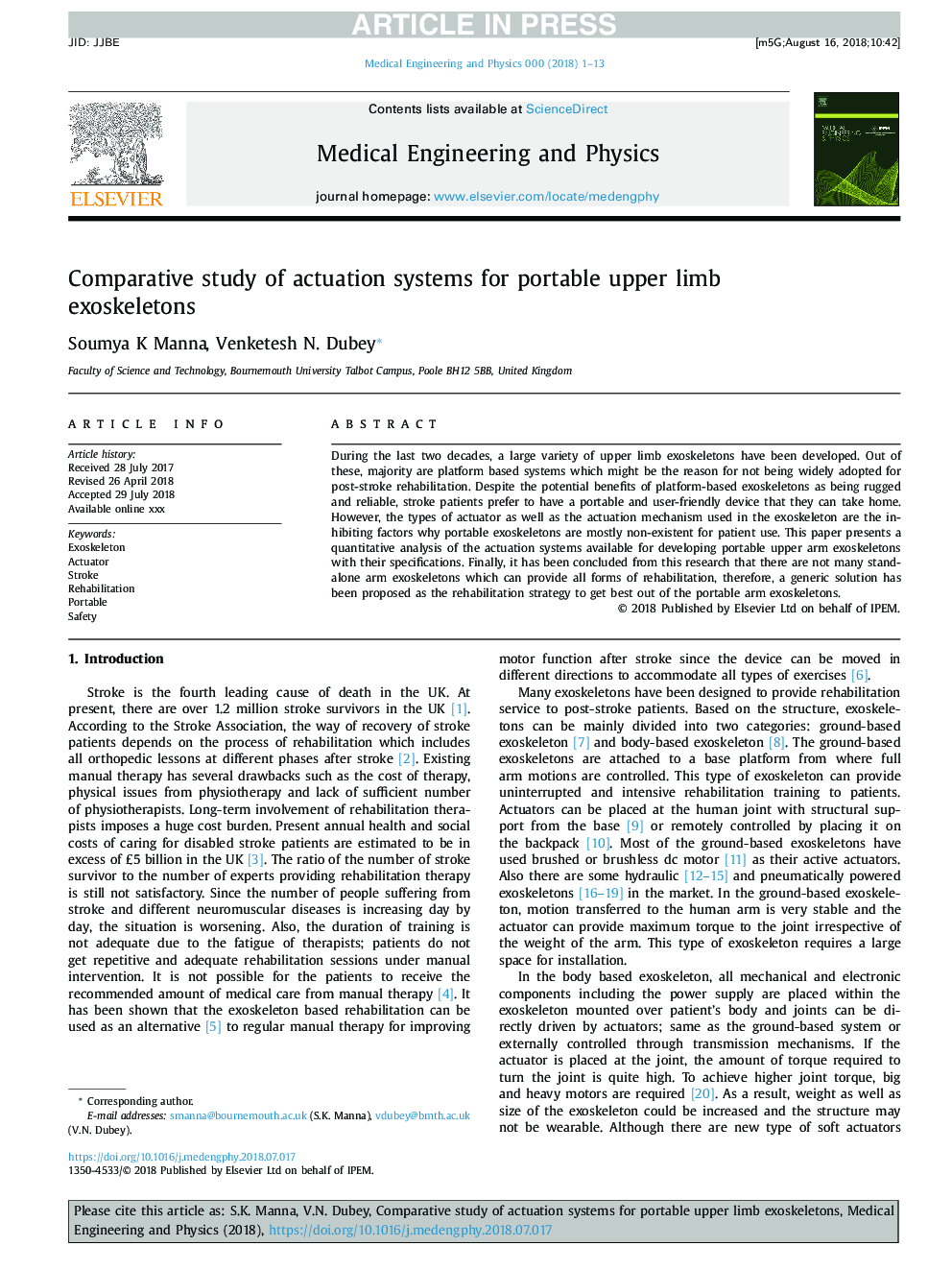| Article ID | Journal | Published Year | Pages | File Type |
|---|---|---|---|---|
| 10153157 | Medical Engineering & Physics | 2018 | 13 Pages |
Abstract
During the last two decades, a large variety of upper limb exoskeletons have been developed. Out of these, majority are platform based systems which might be the reason for not being widely adopted for post-stroke rehabilitation. Despite the potential benefits of platform-based exoskeletons as being rugged and reliable, stroke patients prefer to have a portable and user-friendly device that they can take home. However, the types of actuator as well as the actuation mechanism used in the exoskeleton are the inhibiting factors why portable exoskeletons are mostly non-existent for patient use. This paper presents a quantitative analysis of the actuation systems available for developing portable upper arm exoskeletons with their specifications. Finally, it has been concluded from this research that there are not many stand-alone arm exoskeletons which can provide all forms of rehabilitation, therefore, a generic solution has been proposed as the rehabilitation strategy to get best out of the portable arm exoskeletons.
Related Topics
Physical Sciences and Engineering
Engineering
Biomedical Engineering
Authors
Soumya K Manna, Venketesh N. Dubey,
